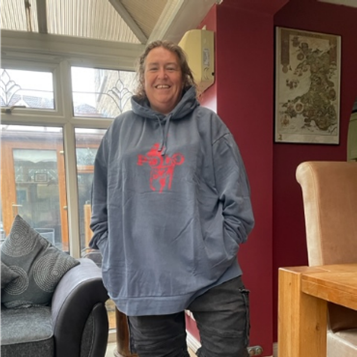A Lived Experience Perspective
 Kirsty Fishburn Lecturer in Mental Health and Non-Medical Prescribing
Kirsty Fishburn Lecturer in Mental Health and Non-Medical Prescribing
University of Hull
• how can we improve the lives of people with Personality Disorder?
• the journey to diagnosis
• how can we reduce the stigma attached to a personality disorder diagnosis?
• improving access and services for diverse communities
• engaging with people to encourage continued contact with services
• understanding the lived experience
Kirsty said there is a wealth of research about Personality Disorder, written by academics and professionals, but what does it mean to live with a Personality Disorder. She went on to consider what is Personality Disorder? That it's important to put the person at the centre to really understand it. There is stigma attached as Personality Disorder is seen as something negative, Kirsy said as professionals we have to challenge it ourselves as it influences how we behave and treat people. Concluding her presentation Kirsty looked at what it means to have a Personality Disorder diagnosis and does it matter?
EXTENDED SESSION: Improving Services for People Diagnosable with Personality Disorder
 Dr Jorge Zimbron Consultant in General Adult and Rehabilitation, Psychiatry
Dr Jorge Zimbron Consultant in General Adult and Rehabilitation, Psychiatry
Cambridgeshire & Peterborough Foundation NHS Trust
• improving services for people with personality disorder
• the impact of the Covid-19 pandemic
• principles of compassion, curiosity and empathy
• issues around medication: is there a consensus?
• what does best practice look like?
• how do you care for those refusing care?
• reducing inappropriate out of area placements
• balancing the risks and benefits of compulsory treatment
Dr Zimbron shared learning from experiences at Springbank, a specialist Personality Disorder unit. He said it's important to think about the system, how it's working, what's helpful and what can we do to improve. In his service they changed from a risk adverse model to promoting autonomy instead. This new approach involves short-term risk, they have stopped using the Mental Health Act and assume capacity, they don't have rules any more, they try to enable people to manage and enjoy life. With this approach there has been a massive decline in incidents per month and now they're on par or often below their acute wards. There have been no deaths in over 8 years compared to 2 on the previous model, they have stopped using restraint, there has been no physical intervention for 4 years.
